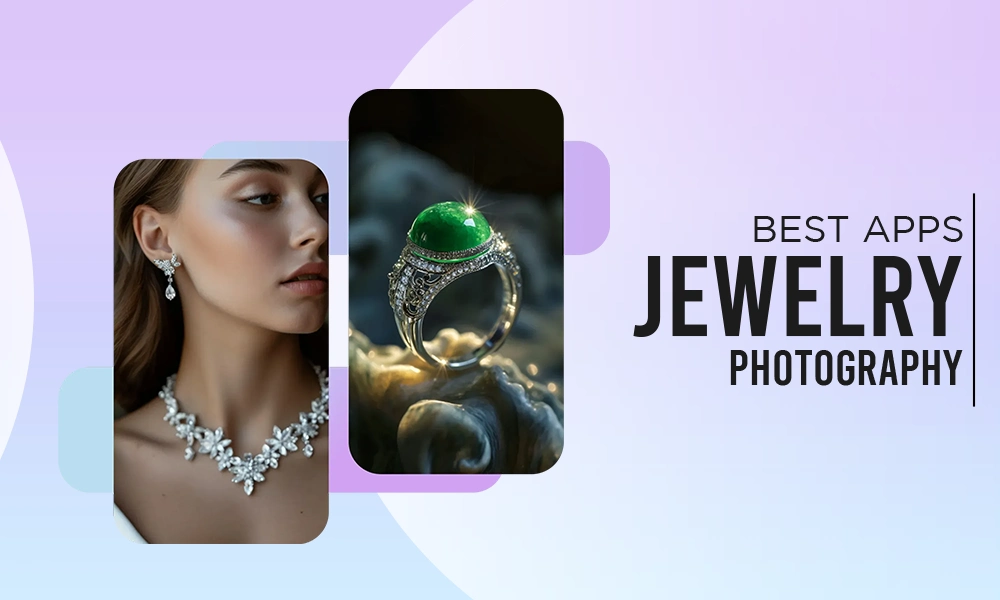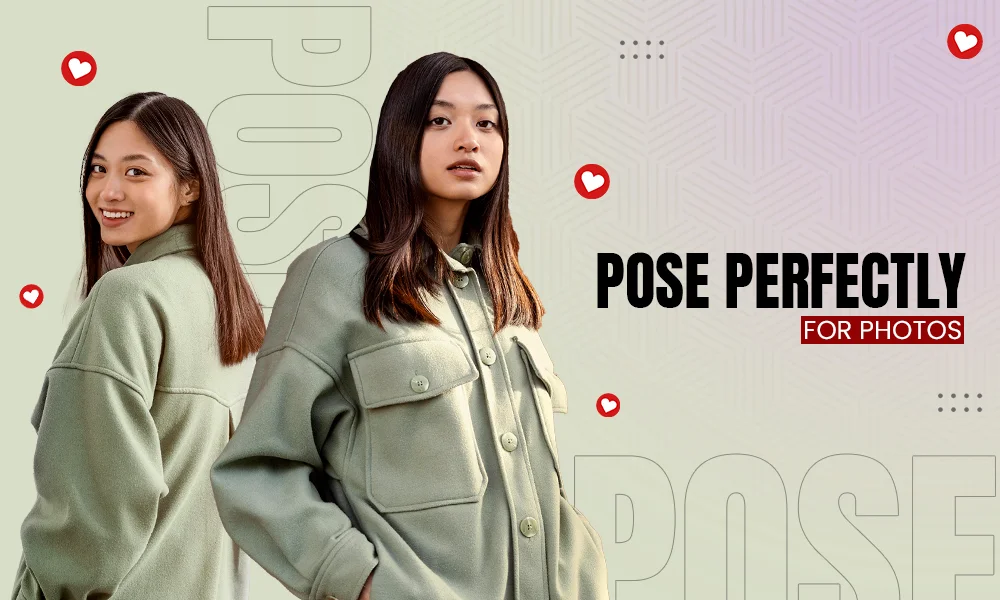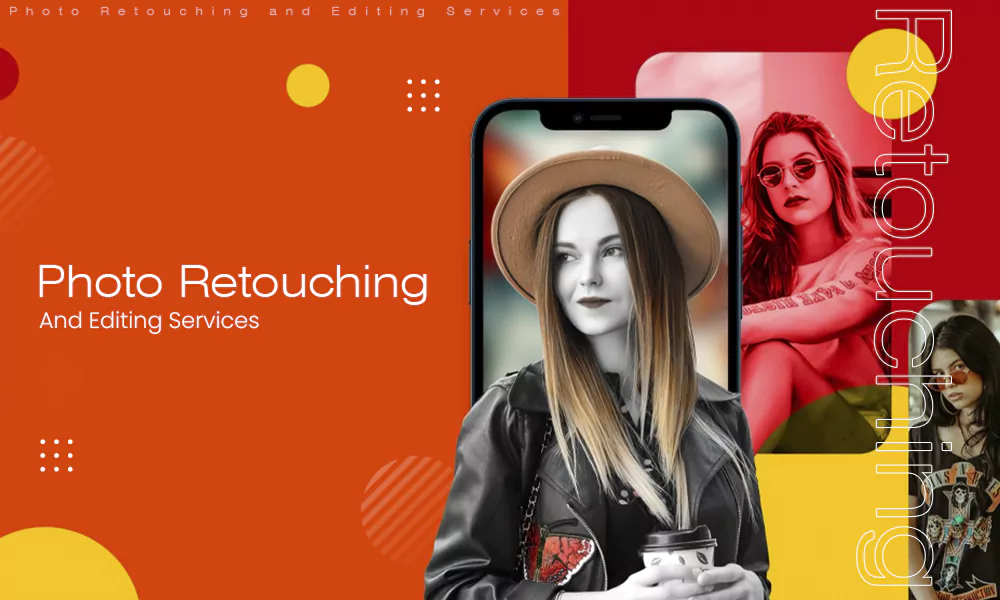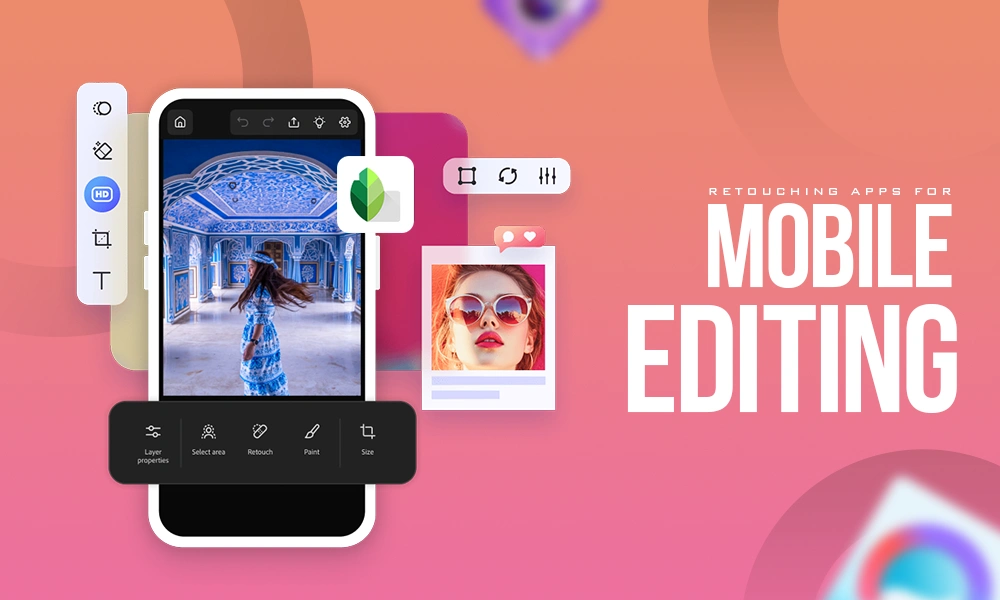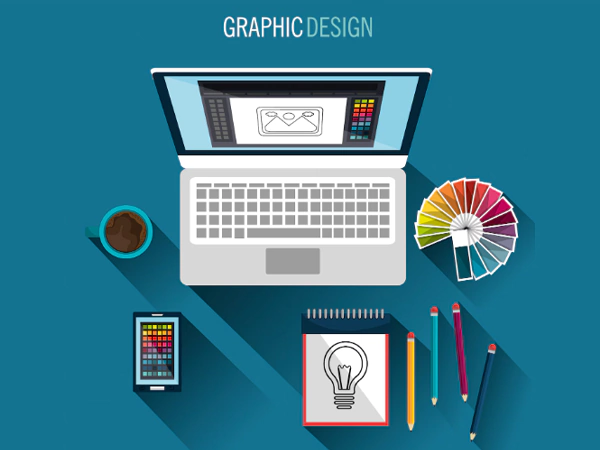
Graphic design plays a crucial role in how we interpret and engage with the world around us. Because, it has an impact on our impressions of and preferences for brand recognition. Graphic design influences user behaviors, engages audiences and effectively communicates information in milliseconds whether it is digital or tangible.
As visual content continues to be consumed in volumes, design as a medium has shifted from visual aesthetics to a voice for a business strategy. Good design allows a business to differentiate its brand, promotes trust, invites customers-usability, engaging experience for the user, both digital, as in navigating applications and physical contexts, as in selection purchase.
Due to this evolution and expansive role, all designers, businesses and individuals, personally and professionally invested in the communication process, will find great value in understanding the numerous branches of graphic design. This article explores 15 essential types of graphic design, explaining how each type is connected to branding, communication, and user engagement.
The article also explores real-life scenarios and practical considerations that demonstrate how various design disciplines function individually and together, in an interconnected process that yields valid, meaningful, functional and exciting visual experiences, both digital and print.
What Is Graphic Design?
Graphic design is the intentional use of creativity, visual thinking, and technology to convey a specific message to an audience.
It creates visuals in either print or digital or environmental formats to inform, persuade or engage people. Although many people think about design only in relation to visuals, it can also relate to the following: problem-solving, storytelling, and user psychology.
Graphic design can cover a very broad expanse. It can range from brand identities, visual advertising, UI/UX, illustration, packaging, and even environmental spaces. The main components of graphic design are:
- Typography: style, arrangement, and appearance of text
- Color: color theory used to evoke emotion and guide focus
- Layout: how the elements will be structured to enhance readability and impact
- Imagery: photographs, illustrations, and graphics used to reinforce a message
When combined, these elements give designers the ability to create strong visuals that express specific messages for a target audience. Graphic design seeks to balance visual appeal and functional communication, therefore every visual decision should be intentional by serving a purpose in the communication strategy.
Why Understanding Different Types Matters
With an increase in demand for visual-rich content, the design field keeps growing. It is important to know the different types of graphic design for several reasons:
For designers: Many designers start as generalists but soon choose a design type they enjoy (branding, UI design, animation, etc.). Understanding the categories of design helps designers find a specialty, build a portfolio suitable for that design, and develop skills to meet industry needs.
For businesses: Many companies have a hard time deciding which creative professional to hire because of overlapping roles (the field of design is confusing!). Understanding types of design will help businesses choose the right specialists for their needs (a branding newspaper to design a logo, etc.).
For the industry: Design exists in collaboration with different professions. Branding gets combined with advertising, packaging gets combined with marketing, and user interface design has an impact on user experience. When a designer can understand types of design, they can recognize the difference and ways in which they build true collaboration to build a smoother work mobile and more continuous identities.
Ultimately, learning about the different types of design exposes the multitude of opportunities available in creative industries and illuminates ways for each specialty type contributes to communication uniquely.
15 Types of Graphic Design (With Examples)
1. Visual Identity Graphic Design
Visual identity design is about creating and maintaining a brand’s public perception through consistent, memorable visual elements. Visual identity includes elements such as logos, color palettes, typography sets, iconography, and brand messaging. Visually representing the brand’s character and identity in a cohesive visual identity is the purpose.
Example: Nike’s swoosh is arguably the most recognized logo in the world. When paired with simplistic typography, and a bold black and white palette, the visual identity communicates the brand’s core message: simple, movement, and performance.
Visual identity designers also sometimes create an entire brand system to ensure a company’s look is representative of a cohesive and consistent brand across digital channels, product packaging, advertisements, and physical environments.
2. Marketing & Advertising Graphic Design

Marketing design pertains to visuals that promote products and services, or a marketing campaign. Designers in marketing design visuals for social media ads, print advertisements, billboards, emails campaigns, brochures, and promotion of products.
For example, Coca-Cola’s, “Share a Coke,” campaign took a bottle of soda and personalized it. The strong visual design of names printed on the sodas quickly became a worldwide sensation. The visual design of a personalized bottle of soda provided a strong emotional connection and went viral.
More often than not, marketing design involves collaborating with marketing departments, copywriters, and brand strategists.
3. User Interface (UI) Design

UI design determines how digital products like apps, websites, and dashboards are visually arranged. It provides a delightful, easy-to-understand, and visually pleasing interface that reflects the brand’s identity.
For example,
Spotify’s interface is clean and thoughtfully structured, uses bold contrast, large visuals of albums, and intuitive navigation tabs, allowing the user to move effortlessly through the music.
UI designers will collaborate with UX designers and developers to turn wireframes into high-fidelity, interactive interfaces.
4. Website Graphic Design
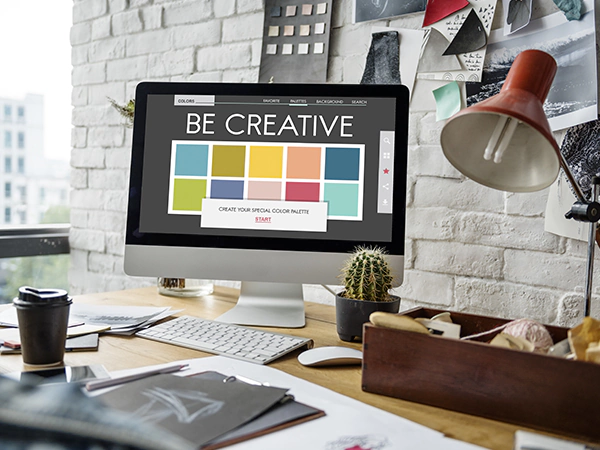
UI design focuses on specifying UI components of your app, but web design encompasses the entire website experience, including layout, color palettes, navigation structure, typography, and images. A web designer must understand aesthetics, visual hierarchy, and principles of responsive web design.
For example:
A great example of minimalist web design is Apple’s website. Apple has clean website layouts that use plenty of whitespace and high-quality images, resulting in a modern and premium experience.
Web design involves merging visual skills with technical knowledge, and often works with developers for production.
5. Publication Design
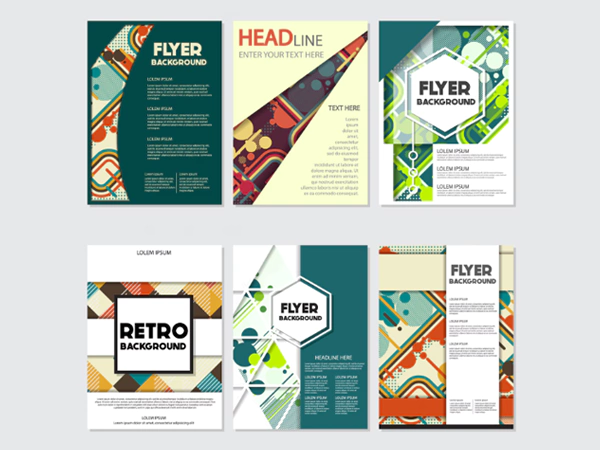
Publication design includes long-format work such as magazines, books, newspapers, annual reports, catalogs, and digital publications. Designers in this area must consider readability, visual hierarchy, typography, and columns in their layouts and overall design.
Example:
Vogue magazine is known for its editorial layouts that bring together photography, fashion illustration, and beautiful typography, which provide an elevated visual narrative that represents the brand.
Publication designers often have to balance the creative process with strict formatting rules, especially in a print scenario.
6. Packaging Design


Packaging has two primary functions: to protect a product and to entice consumers. Packaging designers develop boxes, tags, wrappers, and packaging that represent their brand’s identity and stand out on the shelf.
Example:
Toblerone’s triangular packaging is immediately recognizable and reinforces the uniqueness of the shape of the chocolate bar. It’s geometric packaging form has become part of the brand identity.
Packaging design may also require an understanding of physical materials, printing techniques, and structure.
7. Motion Graphics Design
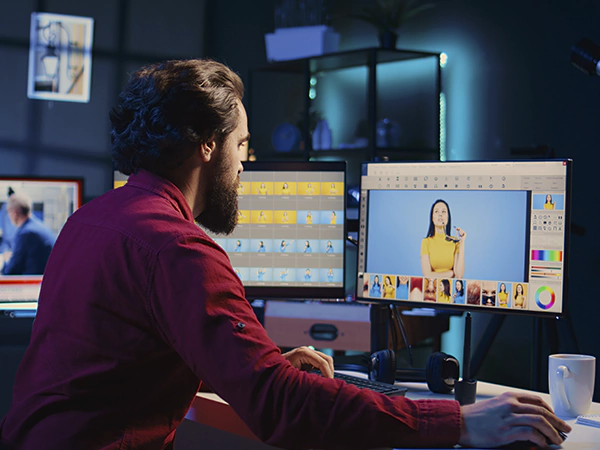
Motion graphics are animated graphic elements (which may include logo reveals, intro animations, transitions, or explainer videos). Motion graphics are a necessity for YouTube, as well as brand identity videos, opening titles of films, and social media promotions.
Example:
Netflix’s animated logo intro (with flowing colored lines transforming into the recognizable “N”) helps set the tone for the brand’s cinematic experience.
Motion designers apply an animation skill set with graphic principles to convey a visual design.
8. Environmental Graphic Design
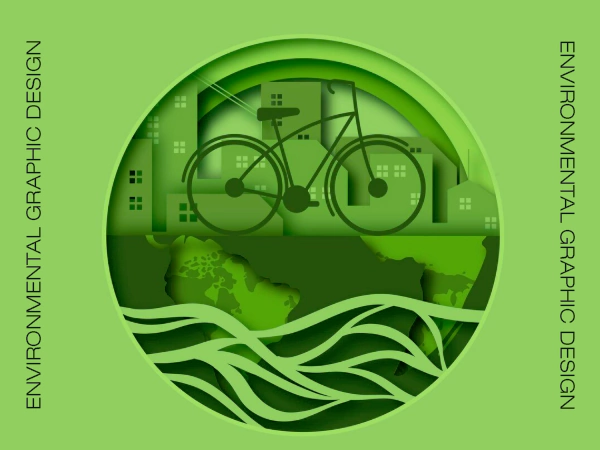
Environmental design serves to combine visual communications with built environments. Examples can include signage systems, murals, museum exhibits, commercial displays, and wayfinding graphics. The goal is to promote navigation, visual appeal, and user experience.
Example:
Airports rely on clear, easy-to-understand signage to refer millions of passengers navigating the terminal. The color-coded visuals and iconography enable travelers to flow through the airport.
Environmental designers often work in conjunction with architects and interior designers
9. Illustration for Graphic Design
Illustration offers personality and narrative to visual communication. While graphic designers might include visual icons or a simple graphic, illustrators develop their own scenes around specific art, character designs, conceptual illustrations, or branded mascots.
Example:
Google doodles provide a signature logo, but complete with whimsical illustrations for global events, holidays, or a person’s life.
These illustrations bring the brand back to human experience, engaging the audience.
10. Typography Design
Font design refers to either designing or modifying existing typefaces (fonts). Additionally, font design includes using an expressive font to indicate a mood or express some aspect of the written content in a character. Fonts used in both circumstances add value and branding and provide a part of creating a visual hierarchy.
Example:
Coca-Cola’s script font is widely recognized. It communicates characteristics of the brand as being nostalgic and classic. Due to the long-distance branding, the font has become part of the identity of Coca-Cola.
Typography designers have a thorough understanding of the overall structure and structure of letterforms, the spacing between letters (kerning and leading), as well as readability (san serif versus serif).
11. Infographic Design
An infographic designer sometimes takes complex information and makes the entire data set visually digestible. They take the data and make it visually interesting, using charts, icons, color, and simplified voice to narrate what is presented.
Example:
An example of an infographic is the World Health Organization produces health infographics at the engaged side of a global awareness campaign or a public health campaign.
The health infographic summarizes the most important pieces of information quickly, using diagrams and graphics that are very easy to parse. Infographic design is becoming more popular in educational, marketing, and journalism.
12. 3D Graphic Design
3D graphic design refers to the practice of creating three-dimensional graphics that represent objects, such as mockups of products, 3D logos, architectural representations, and even environments found in video games and increasingly in the web world. 3D design is useful for many industries that require the visualization of objects in a more realistic and accurate manner.
Example:
Pixar has really raised the standard for animated storytelling by leveraging advanced 3D design techniques in everything from character invention to environments.
3D graphic designers often use software such as Blender, Cinema 4D, or Maya.
13. Animation Design
Animation is the process of generating movement for characters, scenes, and at times, for the entire story. Although motion graphics are more abstract or text-based, animation design is always telling a story and typically requires attention to plot and character. In other words, animation design has more character development.
For example: How many explainer videos are made using Adobe After Effects and use character design at the appropriate moments to represent a narrative?
Animation design creates moving media and uses storytelling techniques associated with cinematic principles and illustration or graphic design.
14. Art and Illustration Design
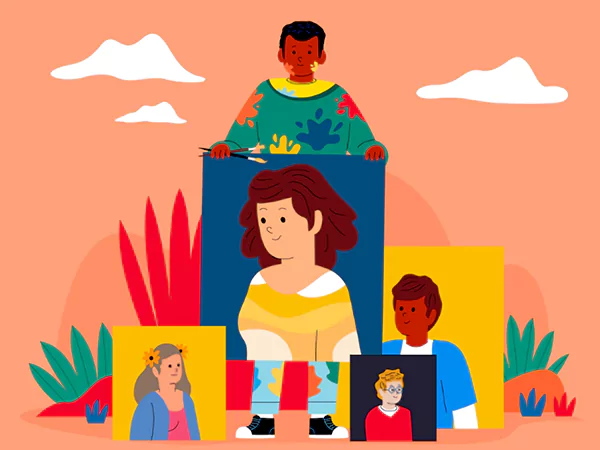
This category of design prioritizes artistic interpretation through graphic media, whether digitally or traditionally. This can be seen in posters, murals, conceptual works of art, editorial illustrations and stylized graphics for advertising.
Example:
Poster art for a film festival, or editorial illustrations in a magazine, often demonstrate a distinctive artistic approach to informing and telling a story.
Designers operating within art-focused design, tend to have more design freedom than commercial design.
15. Presentation Design
Presentation design continues to gain importance in the world of business communication. Designers are creating immaculate slide decks for corporate meetings, conferences, webinars, pitches, and the like.
Example:
Visuals seen in TED Talks tend to utilize minimalist layout, bold typography, and well-placed images and illustrations to enhance and supplement the speaker’s ideas.
Well designed presentation visuals boost clarity, connection, and professionalism.
How These Design Types Work Together
In actual projects, a variety of design disciplines combine their work to produce a unified brand experience. Visual identity, packaging, marketing, web and motion designers each play a role in launching a product, and they all rely on consistent visual identity, which is designed to keep them aligned.
This means that every brand touchpoint from logos to packaging to videos feels consistent and recognizable, resulting in a cohesive experience for the customer.
Tools Used in Graphic Design
Graphic designers utilize numerous tools and resources to carry out their concepts. The following is a list of some of the most used:
- Adobe Creative Cloud: Photoshop for image design, Illustrator for vector graphics, InDesign for publications, and After Effects for animation.
- Figma: a design tool primarily used in UI/UX and for collaborative design for interfaces.
- Canva: a simple design tool, which is useful for quick layouts and for social graphics.
- Sketch: another extremely popular design tool for UI design, specifically for Mac users.
- Blender: a top quality and professional tool for 3D, modeling rendering and animation.
These tools take a degree of skill to master and will allow designers to be flexible with their graphic design. Most importantly, they will allow a graphic design to be professional quality.
Conclusion
Graphic design is a vast and ever-changing field, with many uses throughout both the digital and physical realm. Understanding the 15 types of graphic design is important because it provides a better understanding of how design influences branding, communication, and UX.
This is helpful even if you’re just exploring a career in design, want to hire someone who designs for a living, or simply appreciate or want to learn more about someone’s art, in this case graphic design. These categories can help you feel more confident when navigating the world of visual design.
Whether you are exploring creative opportunities or want to elevate your visuals for your brand, think about collaborating with experienced designers who engage in these areas of design.
Good design means better differentiation in design-oriented industries, engaging users, and leaving lasting impressions about you or your brand identity.



